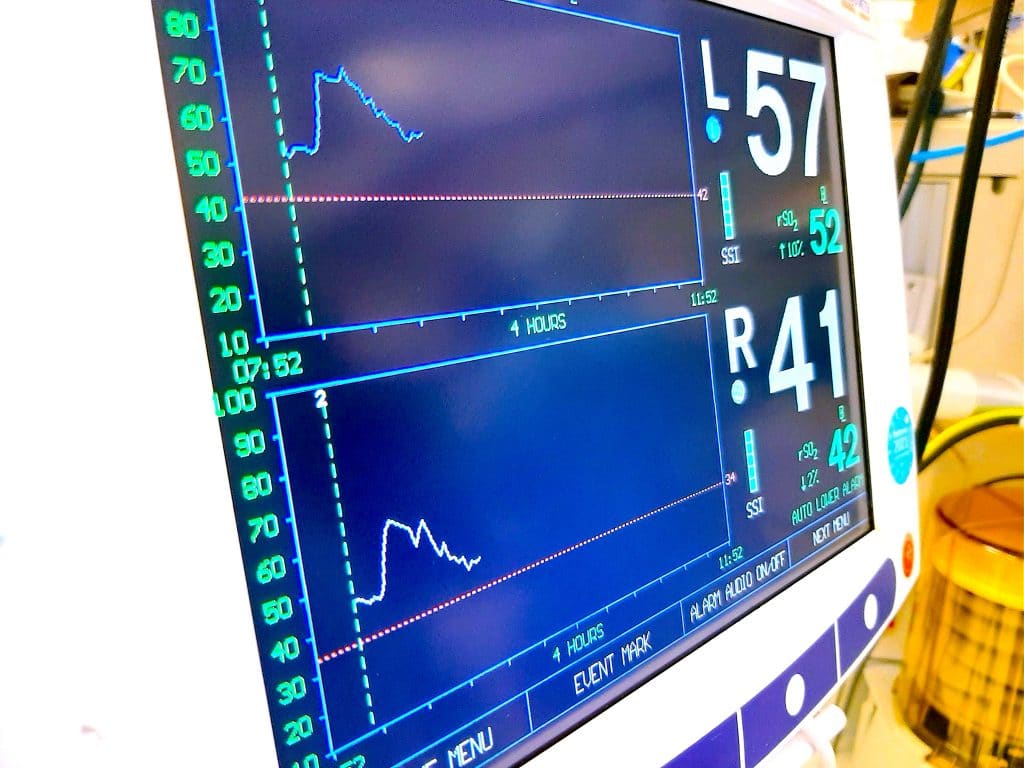Near-Infrared Spectroscopy Assessment of Tissue Oxygenation During Selective Cerebral Perfusion for Neonatal Aortic Arch Reconstruction

Objective
Optimal selective cerebral perfusion (SCP) management for neonatal aortic arch surgery has not been extensively studied. We induced mild hypothermia during SCP and used the tissue oxygenation monitor to ensure adequate perfusion during the cardiopulmonary bypass (CPB).
Methods
Eight cases were recruited from September 2018 to April 2020. SCP was maintained at 30°C, and CPB was adjusted to achieve a mean right radial artery pressure of 30 mmHg. The near-infrared tissue saturation (NIRS) monitor was applied to assess the right and left brain, flank, and lower extremity during the surgery.
Results
During surgery, the mean age was 4.75 days, the mean body weight was 2.92 kg, the CPB duration was 86.5 ±18.7 min, the aortic cross-clamp time was 46.1 ± 12.7 min, and the SCP duration was 14.6±3.4 min. The brain NIRS before, during, and after SCP was 64.2, 67.2, and 71.5 on the left side and 67.9, 66.2, and 70.1 on the right side (p = NS), respectively. However, renal and lower extremity tissue oxygenation, respectively decreased from 61.6 and 62.4 before SCP to 37.7 and 39.9 after SCP (p < 0.05) and then increased to 70.1 and 90.4 after full body flow resumed. No stroke was reported postoperatively.
Conclusion
SCP under mild hypothermia can aid in efficient maintenance of brain perfusion during neonatal arch reconstruction. The clinical outcome of this strategy was favorable for up to 20 min, but the safety duration of lower body ischemia warrants further analysis.
